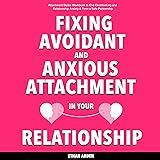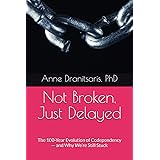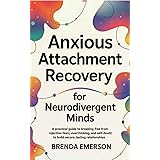Have you ever considered the true depth and destructive power of gambling addiction? As discussed in the insightful video featuring Joe Rogan and Brian Simpson, problem gambling is not a simple habit; it is often a severe sickness. Its impact on individuals and families can be devastating. This article explores the nuanced facets of gambling addiction, drawing parallels to other severe dependencies and offering insights into its complex nature.
Understanding Gambling Addiction: More Than Just a Game
The concept of “action” is central to gambling addiction. It is not always about winning or losing money. The intense rush of adrenaline is highly sought. The high stakes create a compelling psychological draw. Many individuals are not chasing wealth. They are pursuing the feeling of being “in action.”
The “Action” Explained
Gamblers often crave the thrill. This thrill comes from the uncertainty of a bet. Neurologically, this activates reward pathways in the brain. Dopamine is released, creating a powerful feeling of pleasure. This sensation can be as potent as that from drug use. The brain learns to associate gambling with this rush. Over time, a strong craving develops. This explains why some people cannot stop. The “action” becomes an essential need. It is a pursuit distinct from financial gain.
The Unseen Costs: Financial Ruin
The video mentions high-stakes games. Players might bet $25,000. There could be $500,000 on the side. These figures highlight the significant financial scale. However, the true cost extends beyond these sums. Problem gambling leads to severe debt. Studies indicate that problem gamblers often accumulate tens of thousands in debt. Bankruptcy is a frequent outcome. This financial distress affects entire families. Savings are depleted. Homes can be lost. Relationships become strained. The pursuit of “action” often comes with a steep price. The average gambling-related debt reported by callers to helplines can be substantial, sometimes exceeding $50,000 for severe cases, according to various problem gambling council reports.
Gambling Addiction: A Comparison to Other Addictions
The discussion in the video likens gambling addiction to crack cocaine. This comparison highlights its intense, compulsive nature. It underscores the difficulty of breaking free. It also touches on alcohol addiction. Each addiction presents unique challenges.
The Crack Cocaine Parallel
The comparison to crack cocaine is not accidental. Both activate similar brain reward systems. They create an intense desire for the experience. Gamblers feel an overwhelming urge to place bets. This compulsion is similar to a drug craving. They seek the “action.” This often overrides logical thought. The consequences are known, but the behavior persists. This is a hallmark of severe addiction. It signifies a profound loss of control. The pursuit becomes paramount. Other life priorities diminish.
Alcohol Addiction: Relatable Struggles
Alcohol addiction is often more visible. It is also more widely understood. Many people understand the desire to escape. Drinking can offer temporary relief from pain. Childhood issues or failures can fuel this. Genetics also play a role. Some individuals have a predisposition to alcoholism. Kicking alcohol addiction is difficult. However, many find recovery through support. David Tell’s story is a testament to this. He successfully overcame his drinking problem. This shows that recovery is possible. Gambling addiction, though less visible, shares similar roots. It also often serves as an escape mechanism. Underlying emotional pain can be a driver. Both addictions benefit from professional help. Both also require strong support networks.
Why Do People Keep Chasing Losses? The Psychology of Addiction
The phrase “chasing after that money” resonates deeply. It describes a common cycle. Gamblers try to win back losses. This rarely works. It deepens the addiction.
The Illusion of Control
Many gamblers believe they can control outcomes. This is an irrational thought. They feel special strategies will work. They might remember past wins. These memories overshadow numerous losses. This creates a false sense of skill. They think they can beat the system. This illusion keeps them betting. It prevents them from stopping.
The Sunk Cost Fallacy
The sunk cost fallacy influences gambling behavior. People continue investing time or money. This happens because they have already invested so much. They feel they must keep going. Otherwise, their previous investments are wasted. This drives the cycle of chasing losses. It makes it harder to walk away. More money is poured in. The hope of recovery lingers. This often leads to deeper financial ruin. It is a psychological trap.
Brain Chemistry and Compulsion
Addiction alters brain chemistry. Dopamine pathways become dysregulated. The brain seeks the intense pleasure once experienced. This drives compulsive behavior. Even knowing the harm, stopping becomes challenging. The brain itself creates a powerful pull. This explains why willpower alone often fails. Addiction is a complex brain disease. It is not a moral failing. Professional intervention is often necessary. The desire for “action” overrides rational thought. It creates a powerful, persistent compulsion.
Recognizing the Signs of Problem Gambling
Identifying gambling addiction can be difficult. It often lacks physical signs. However, behavioral changes are usually evident. Early recognition is crucial for intervention.
Behavioral Indicators
Increased time spent gambling is a key sign. Individuals may lie about their activities. They might become secretive. Neglecting responsibilities is common. Work, school, or family commitments suffer. They may borrow money frequently. Others might notice erratic moods. A constant preoccupation with gambling thoughts can exist. Hiding gambling losses is also frequent. They might isolate themselves from loved ones. These behaviors are warning signs. They suggest a problem is developing. It is important to pay attention.
Emotional and Financial Warning Signs
Emotional distress is a major indicator. Individuals may experience anxiety. Depression is also common. Irritability can increase significantly. They might feel guilt or shame. Financial problems escalate. Unexplained debts appear. Bills go unpaid. Assets may be sold to fund gambling. The individual may become desperate. They might chase bigger bets. This is done to recover losses. These signs point to a serious issue. They show the addiction’s progression. Intervention becomes critical at this stage.
Pathways to Recovery and Support
Recovery from gambling addiction is achievable. It requires dedication. Support systems are vital. Various resources are available.
Seeking Professional Help
Professional guidance is highly recommended. Therapists specializing in addiction can help. Cognitive Behavioral Therapy (CBT) is often effective. It helps change thinking patterns. Medications may also be prescribed. They can manage co-occurring conditions. These include depression or anxiety. Seeking help early improves outcomes. It prevents further damage. A structured recovery plan is crucial. This helps navigate challenges. It provides necessary tools for long-term sobriety.
Support Systems and Resources
Support groups offer a safe space. Gamblers Anonymous (GA) is a well-known resource. Members share experiences. They offer peer support. Family therapy can also be beneficial. It helps heal relationships. It teaches communication strategies. Hotlines and online resources are available. They provide immediate assistance. These resources emphasize that no one is alone. Millions of people struggle with problem gambling. Help is always within reach. A commitment to change is the first step. The journey to recovery is possible.











